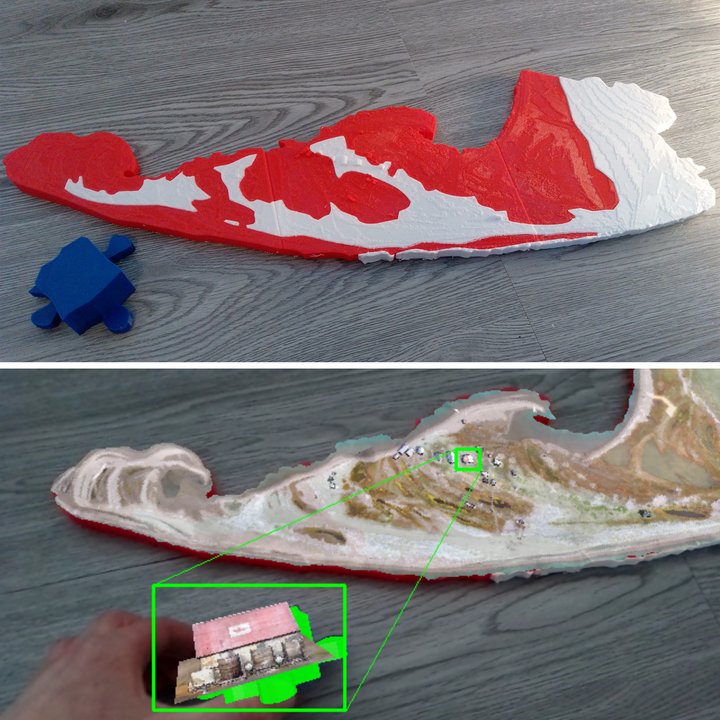Mobile Augmented Reality for Adding Detailed Multimedia Content to Historical Physicalizations

Abstract
Combining augmented reality (AR) and physicalization offers both opportunities and challenges when representing detailed historical data. In this paper, we describe a framework where mobile AR supplements views of 3D prints of historical locations with interactive functionality and small visual details that the prints alone cannot display. Since seeing certain details requires bringing the camera close to the physical objects, the resulting camera frames may lack the visual information necessary to determine objects’ positions and accurately superimpose the overlay. We address this by enhancing tracking of 3D prints at close distances and employing visualization techniques that allow viewing small details in ways that do not interfere with tracking. To demonstrate these techniques, we apply our framework to the preservation of two heritage sites that represent large real-life areas containing smaller details of interest.